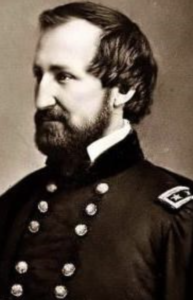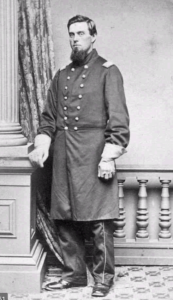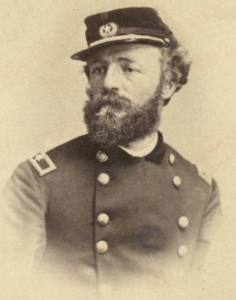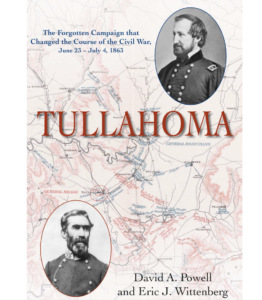As a pre-study assignment for a class on the Tullahoma Campaign, a newer book, Tullahoma: The Forgotten Campaign that Changed the Course of the Civil War, June 23 – July 4, 1863, was recommended as a good resource to become familiar with events and movements of the Army of the Cumberland versus the Army of Tennessee.

Prior to that campaign at the very close of 1862, Major General William Starke Rosecrans had faced off against General Braxton Bragg at the Battle of Stones River, near Murfreesboro, Tennessee. Rosecrans chalked up a win but only due to the retreat of Bragg with both sides losing a staggering number of men for what would be the highest casualty percentage in the entire Civil War.
After Stones River, both the Union and Confederate Armies were dug in and rebuilding. Rosecrans went to work making significant and innovative changes to the Army of the Cumberland and its infrastructure, as well as building a large supply fort at Murfreesboro – the remains of which can be seen today. In the meantime, the Army of Tennessee anchored at Tullahoma and Shelbyville, with their illustrious cavalry under Wheeler, Morgan and Forest canvassing wide swaths of area and harassing Union troops. But Rosecrans was building his own gallant cavalry force as he knew this was one of his Achilles heels.
With Washington becoming increasingly displeased at Rosecrans’ unwillingness to confront Bragg during the first half of 1863 as Lincoln’s second run for president was growing closer, hopes were pinned on success in mid-Tennessee. Not to be pushed by progressively terse exchanges from General Henry Halleck, Rosecrans instead took his time to prepare and rebuild before finally moving out on June 23rd. Grant, in the meantime, had begun his assaults on Vicksburg and Lee and Meade were moving toward each other, soon to clash at Gettysburg.
Though this campaign was significantly different from most others in that it was nearly bloodless by Civil War standards, it’s fascinating how Rosecrans with his forces pushed the Confederate forces down to Chattanooga with the mastery of a chess player and some luck. As with every campaign, there are a number of interesting players that make the exciting story.

Some page turners include the aggressive taking of Hoover’s Gap by the mounted infantry of the Lightning Brigade under Colonel John Wilder, packing their new Spencer repeating rifles and with pharmacist Eli Lilly manning their artillery.

Or John Hunt Morgan’s antics which may have tipped the scales the wrong direction for Bragg. Another page turner is Irish cavalry officer Colonel Robert Minty leading his Saber Brigade to charge at Joe Wheeler’s forces. They appear through a cloud of cannon smoke and force the fleeing Wheeler himself to jump with his horse into the Duck River. And, yes, their sabers were drawn!
And, factor in all of Rosecrans’ curious quirks that would add to his eventual downfall as a general. Needless to say, Gettysburg and Vicksburg received all the accolades and Rosecrans’ contribution of driving the Confederates out of their Tennessee breadbasket engendered a lukewarm response. The indignant Rosecrans was prompted to write to Edwin Stanton: “You do not appear to observe the fact that this noble army has driven the rebels from Middle Tennessee of which my dispatch informed you. I beg you…do not overlook so great an event because it is not written in letters of blood.”
There is so much more to this not oft-studied campaign and the book is well presented and researched by historians David A. Powell and Eric J. Wittenberg. Tullahoma: The Forgotten Campaign is also a heck of a pleasurable read and definitely worth your time, especially if you are interested in the Western Theatre.

